de Havilland DH.98 Mosquito T.Mk.III (TV959) is currently a work in progress at the Flying Heritage Collection (FHC) located at Paine Field, Washington. This particular one is currently the third flying Mosquito example (with more to follow) and the second reconstructed and restored to flight by Avspecs Ltd. in New Zealand (FB.Mk.26 fighter bomber KA114 being the first in 2013 and now based in Norfolk, Virginia in the Jerry Yagen collection. There is also a flying B.35 bomber variant, VR796 in British Columbia, Canada that was rebuilt and restored by Victoria Air Maintenance Ltd. to flight in 2014 for Bob Jens).

Checking Out the FHC Mosquito
This week I was at FHC with a fellow aviation enthusiast to take a look at the progress of TV959 and meet the Avspecs crew from New Zealand who are helping put TV959 back into flying condition (great blokes!). Seeing those big exposed 1,610hp Rolls Royce Merlin 25 (with 225 parts) V-12 engines up close is something else. This was somewhat of an unusual opportunity as the wheels are currently not fitted and the Mossie is a lot closer to the ground than it will normally be (soon enough all will be back together and this type of view is unlikely to happen again)!
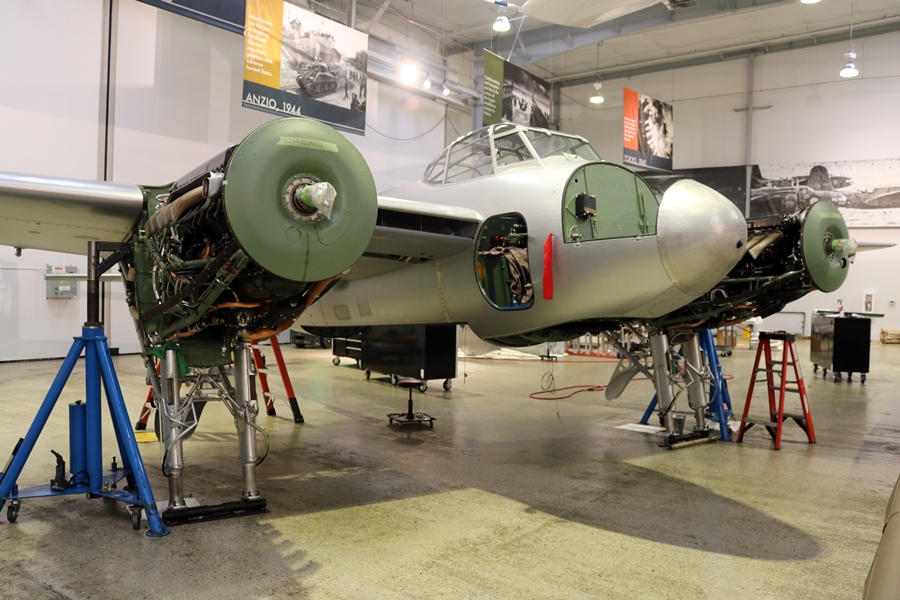

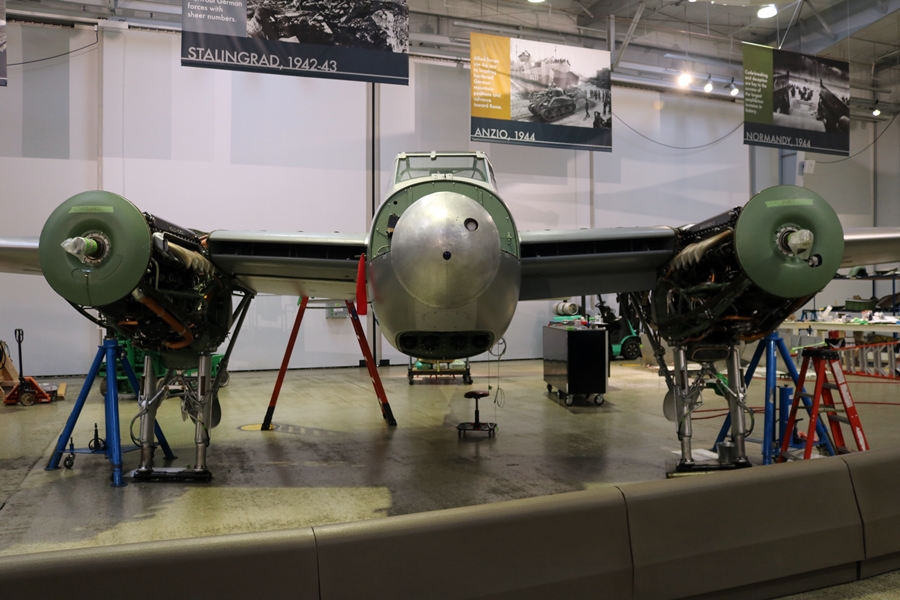
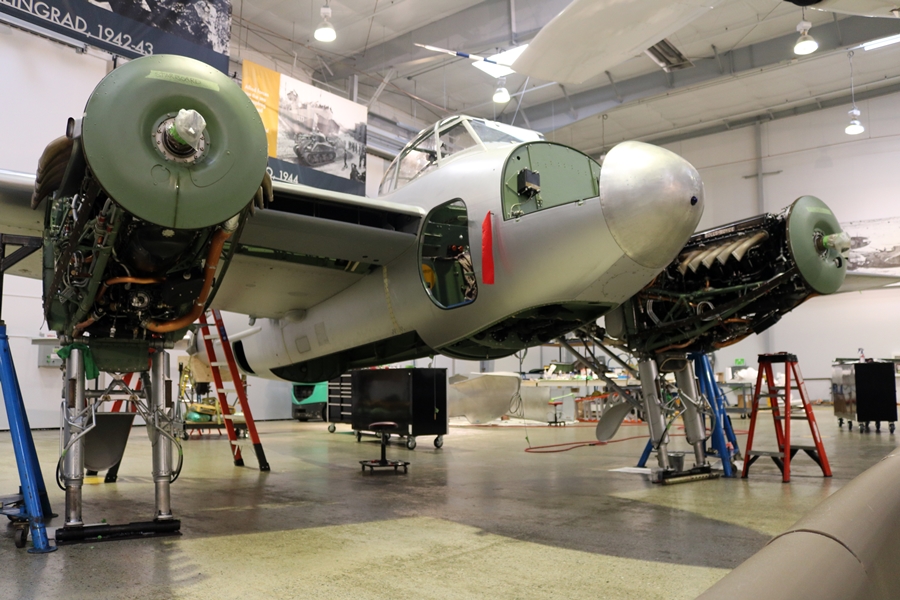
TV959’s first post restoration flight was conducted by Avspecs in New Zealand in September 2016. It was fully tested out, then not long after was packed up and shipped to the USA. Since December 2016 it has been unpacked and is now being put back together in the second FHC hangar in preparation for its first engine runs and first flight stateside (it is kind of like a life size model kit!).
RAF History and Movie Career
TV959 was built in 1945 as an RAF training variant in Leavesden, England. To save on precious raw metals the Mosquito was mostly constructed of spruce, birch plywood and balsa, making it lighter and fast, hence the “Wooden Wonder” nickname. First flying in 1940, the type was fast and versatile also operating as a fighter-bomber, bomber, night fighter and reconnaissance aircraft and over 7,700 were produced going on to serve in numerous air forces around the world into the 1960’s.
TV959 had a long career with the RAF and flew on until 1963 (it was the last one retired)! It then entered the Imperial War Museum collection but was also briefly a star in the 1964 movie, 633 Squadron. Then it went on display in the museum until 1988 but it was not until 2003 that it was traded to FHC and then sent to New Zealand.
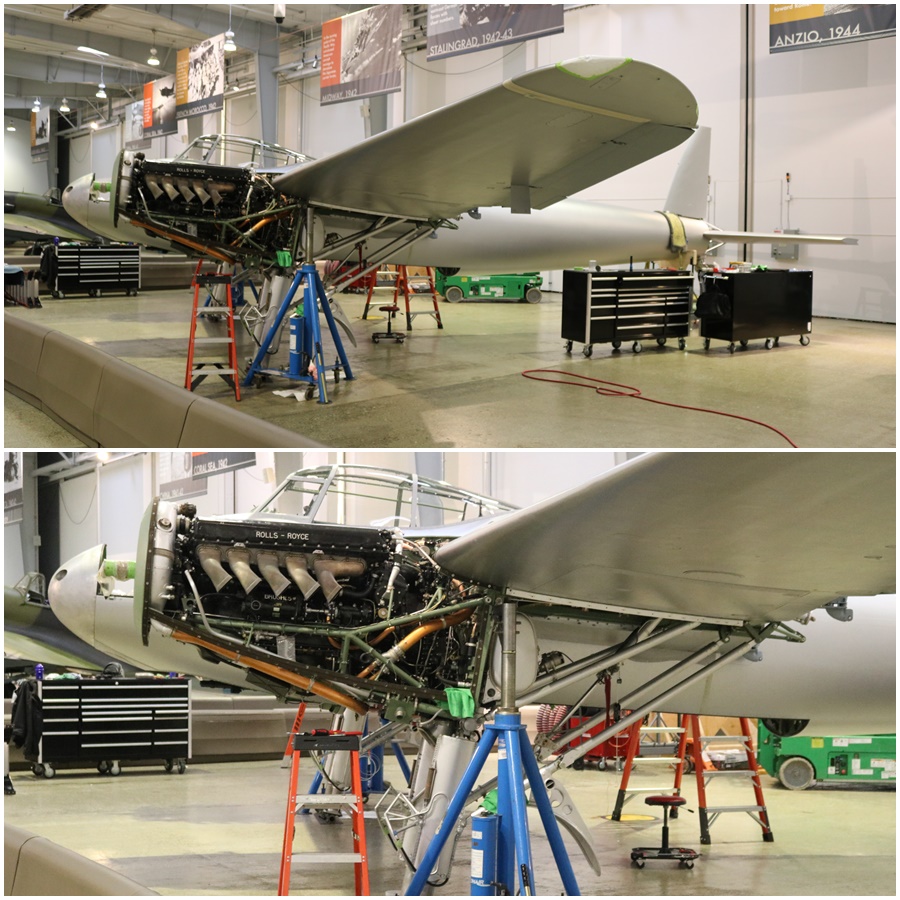
Although a dual control trainer some superficial modifications have and will be made to make it appear to be a FB.Mk.VI fighter-bomber including nose guns (the fighter-bomber variant had 4 x 20mm cannons and 4 x .303 machine guns in the nose). Currently only replica 4 x 20mm chin cannons are mounted.
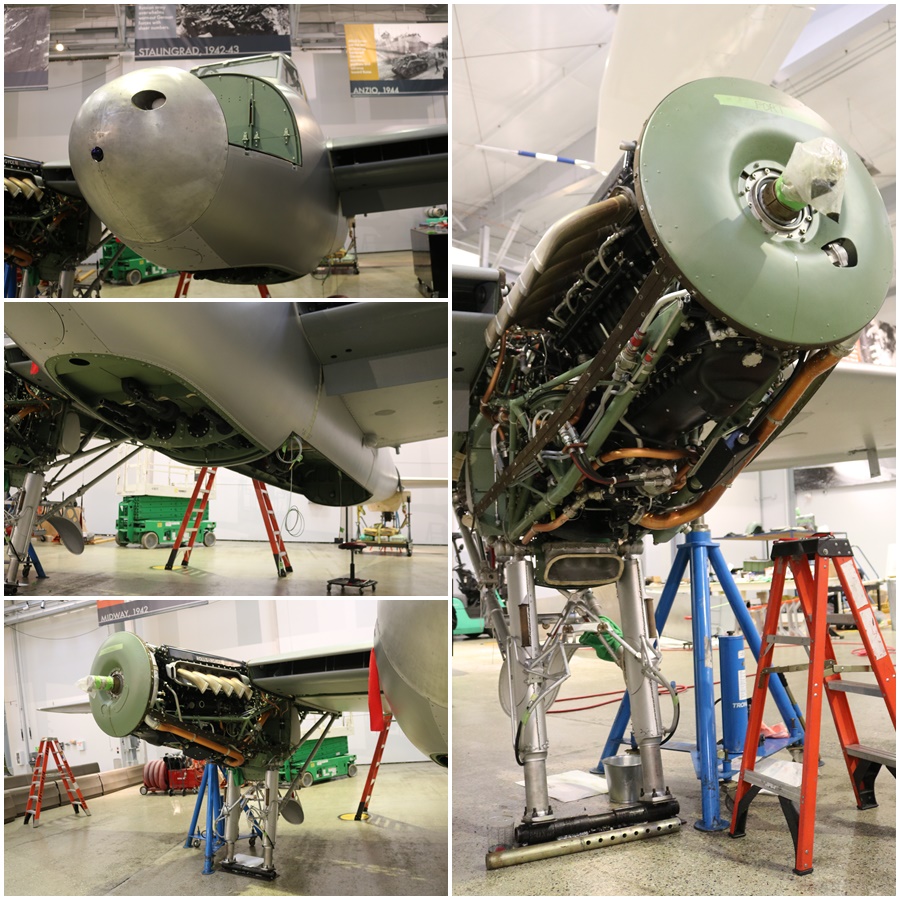

The current dope finish will be replaced by a wartime camouflage scheme and markings (in NZ it had temporary RNZAF markings. I kind of wish they had been retained as it looked great!). I cannot wait to see it fly in person!

Reblogged this on RAF 23 Squadron and commented:
Thanks Deano.
LikeLiked by 1 person
Thanks Pierre!
LikeLike
One of the greatest plane.
LikeLiked by 1 person
Agreed 100%!
LikeLike
Nice wrap-up, and thanks for the progress photos.

I was just able to catch it on the last NZ test flight.
LikeLiked by 2 people
Thanks Errol. Glad you saw it fly!
LikeLike
The way things are going we’ll have a whole squadron flying and not a moment too soon!
LikeLiked by 2 people
Yes! Imagine that!
LikeLiked by 1 person
Wouldn’t it be something!
LikeLiked by 1 person
Get that Aussie DAP Beaufighter at Duxford in the mix and…
LikeLike
Excellent news! Cheered me up no end!
LikeLiked by 1 person
Glad to hear it!
LikeLike
Many are not aware that some Mosquito and Lancaster’s used American built Packard-Merlin engines, as did all but a few P-51 Mustang, yet you never see the name “Packard” attached to these airplanes. I’ve read that Packard was actually owned by an English firm?
LikeLiked by 2 people
Hi, I am uncertain on the ownership but they certainly built a vast number of licence-built aircraft and PT Boat engines. One of the most fascinating places I have explored was the abandoned Packard Plant in Detroit – the place is massive. It was closed in the 1950’s!
LikeLiked by 1 person
The development of the PT boats is one of the most fascinating stories of any water-craft ever adopted by the US Navy. It took them many decades of research and development with wooden craft ranging from 70 to something over 80 foot length. Two significant problems: 1. keeping the hull together at speeds ranging from 35 to nearly 50 mph and 2. The necessary use of aviation 100 octane fuel which was not readily available near the waters where the boats were used. Their greatest success was against Japanese barges in coastal waters and the M-2 Browning wasn’t large enough to do significant damage. Crews often mounted 20 mm guns and PT 109 was reported to have a 37 mm cannon taken from an unserviceable P-39 (?). There were many boat companies involved and a host of aircraft engines were used during the development years including Liberty engines, primarily developed from German engines of World War one. The story is very complex, too much for ONE reading. The story would make a fascinating movie!
LikeLiked by 1 person
There’s a long story about Packard getting the manufacturing rights to the Rolls Royce Merlin. The British Purchasing Agency visited a number of American companies, apparently turned Ford down because Ford insisted on making changes to the engine (to reduce price and increase profits?). Packard was definitely interested and “recommended” (I.E. said “Please”, if you will) improvements to the engine bearing material and induction system which increased engine life and performance – Rolls agreed. I certain there’s more to it than that! If Packard was a British company (?) that would have added some interest on the part of the Brit’s! No matter who made it – its a Magnificent Engine and sounds sooooo SWEET!
LikeLiked by 1 person
Any Merlin is a good Merlin. Love that roar!
LikeLike
Many years ago I worked with an individual who worked on a Mosquito in Detroit – as a junior mechanic. The Mosquito he worked on was on loan from the RAF and was well worn. Several things he remembered: 1. The airplane, being plywood, had gobs of “bare wire grounds since you couldn’t ground to the airframe. 2. The engine starter system required the use of the thumb and one finger, which you stuck through openings in the starter cover plate. The springs under these starter buttons were very strong and it took a lot of finger pressure to get the engines turning. 3. Every pilot on the field wanted to fly the machine, few got the opportunity since it was a foreign owned a aircraft and there was only one available.
LikeLiked by 1 person
Stories from the past like this are great to hear. Thanks for sharing! Love the Mossie!
LikeLike
These stories from the past remind me of walking through an antique store and trying to figure out what all the old time, odd looking tools were used for. In my case I usually visualize something far more complex than the actual use. Think SIMPLE!
LikeLiked by 1 person
Very true! I love seeing all the old scientific and medical gear too – sometimes they can be quite terrifying!
LikeLike
Reblogged this on War Machine Museum.
LikeLike